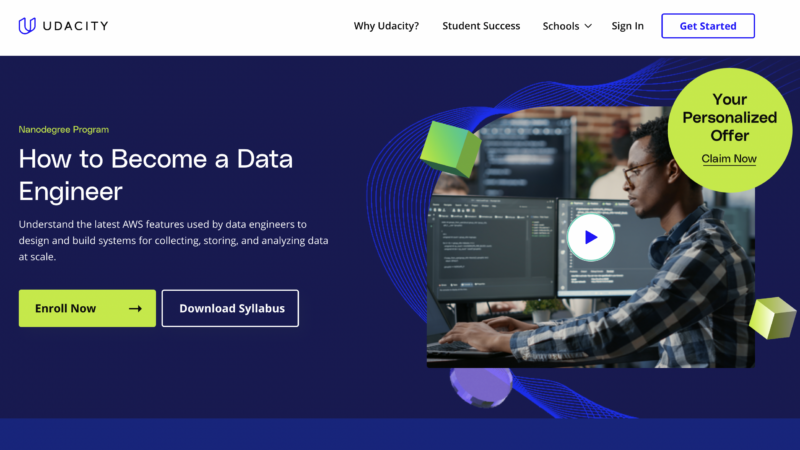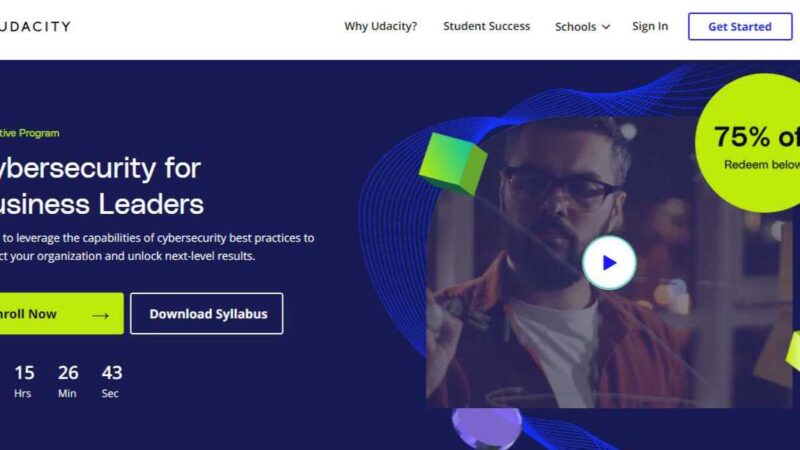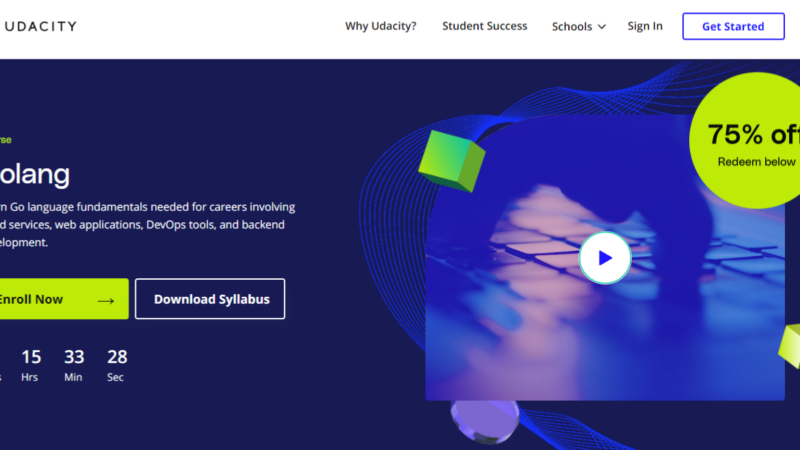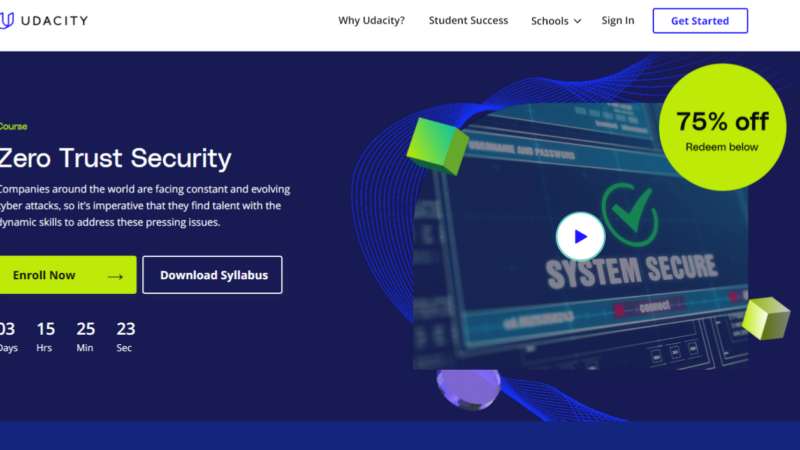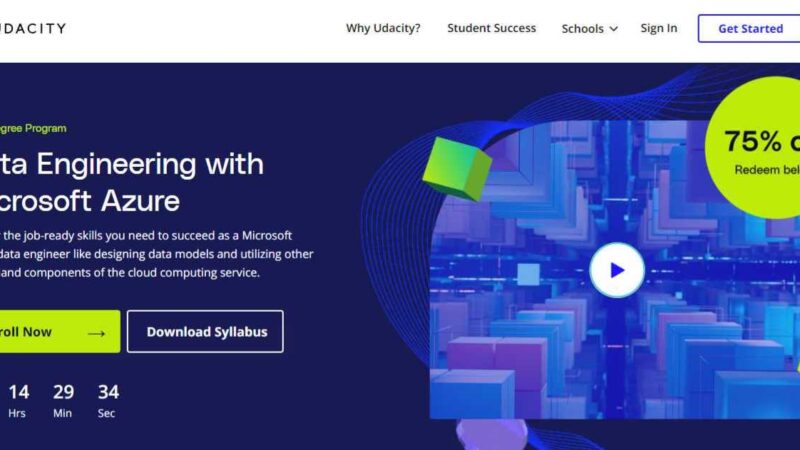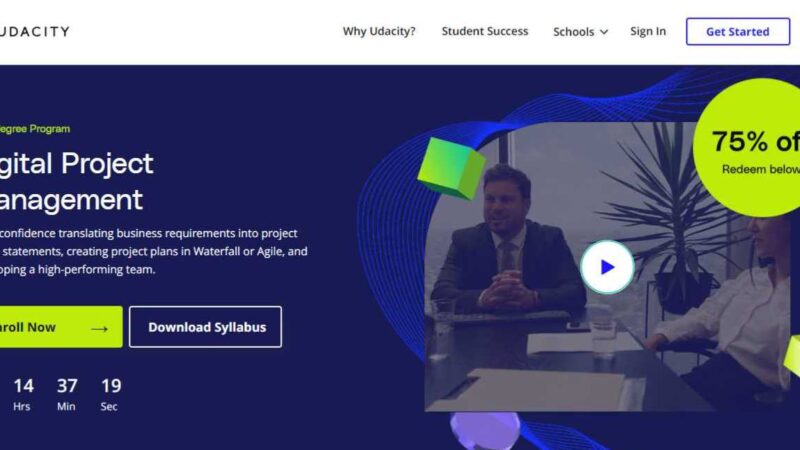Udacity DevOps Nanodegree Course Review, Is it Worth it ?

While you may have heard of Dev Ops you might not know exactly what it is. If you’re interested in the world of IT, it is a position you will want to learn about, especially for the numerous career opportunities that come along with it. So, what is it exactly? Well, you can think of a Dev Ops engineer as the all-knowing developer turned inspector who bridges gaps between developers and IT staffers. They understand a lot about the business, often having knowledge across the board knowledge. They know how to develop digital pipelines to allow information to flow smoothly to get any kind of digital job done.
If this sounds like an interesting career choice to you, you have lots of options to get you on the right path. One such path is the Dev Ops Nanodegree Course from Udacity. Udacity is an online university dedicated to the world of technology and information. They come with a reputation, a quite good one at that but, what about this nanodegree? Before jumping in head first, we have reviewed the course to help you decide whether or not this is the course for you. We will break down the course, talk about some of the prerequisites, and take a look at the job market all before giving you our final verdict.
Udacity Devops Nanodegree
Before we break down the course, let’s take a look at what a Udacity Nanodegree entails. Every nanodegree comes with a few perks that sets this degree program apart. You can expect the following when you sign up for a nanodegree course:
- Real projects from real companies
- A mentor for support
- Interview prep
- Resume review
- Super flexible learning
Sounds good so far, right? We think so, especially for the numerous companies that have teamed up with the program to offer projects and job opportunities to learners and graduates of the course. Udacity has partnered with several powerhouse companies in the business which are part of the career services. They will help you perfect your resume, prepare for your first interview and even help match you to the perfect company.
Course Breakdown: What Will You Learn?
Now, let’s take a look at the course and more specifically what you will be learning. The main objectives of the course are to leave you with knowledge to design infrastructures and construct pipelines for all types of deployment strategies. As you make it through each section of the course, you’re met with milestone projects where you can apply your newly learned knowledge. After successful completion of each project, you then move forward sharpening your skills and learning new ones as you progress. This all leads to a final capstone where you have the opportunity to apply all of your knowledge and have more freedom to develop as you please. As you can probably imagine, this is an intermediate program, which means you will have to have prior knowledge before you begin.
Prerequisites
As an intermediate course, you’ll first have to meet some requirements. The site specifically lists a few starting with experience programming with JavaScript. Other required knowledge includes:
- A good grasp plus experience using both HTML and CSS
- Familiar with object-oriented programming
- Know the basics of Linux Command
If you have worked with all of these then the course should be doable. Those who have not should first take a look at some of the free courses offered to brush up or start leaning. You can find a list of introductory courses to kick your skills up a notch on the Udacity Introductory Courses page.
Course Breakdown
The entire course is broken down into four sections. Each section, as we mentioned, comes with a project and/or some type of test or quiz to ensure that you have a good grasp on the new knowledge you’ve learned. Apart from learning through lecture, you’ll also have a chance to apply what you’ve learned, a necessity when studying to become a Dev Op Engineer. The four sections are broken down below along with a small description of what you’ll be learning throughout each section:
-
All Things Cloud
Here you will start by building a strong foundation in cloud computing. You’ll learn the ropes of all the essential parts that work together to create a seamless flow of data including security, storage, messaging and cloud management. You will then have a chance to apply that knowledge, with the end of course project. The project will have you working with AWS to create and deploy a static website.
-
Infrastructure as Code (IAC)
Things start to heat up in this part so buckle up and get ready! Here you get to write scripts just like those in the field do using CloudFormation. You will see how security is provided to servers by laying the infrastructure which is the essential backbone of systematic pages. Combining the knowledge from part one, you’ll start to dive in deeper learning some of the most used patterns in the industry. Plus, you’ll begin to see how the core of most systems is created taking innovative approaches using Cloud Architecture Diagrams. To wrap up, you will design your own app using CloudFormation; what a way to end!
-
Start Building
You may already be familiar with source code but, how does it become the well-oiled machine that powers systems across the world wide web? You will learn the answer here, following the process from source code and beyond. This is the section where you will construct pipelines, discover how to monitor and log plus, learn how to tell if your system is running at its peak and running efficiently. You’ll also get a sneak peek into how professionals make changes to sites using a Configuration Management Tool. At the end, you’ll actually make your own pipeline construction and launch it to get some practice from start to finish.
-
Meet Kubernetes
Last but not least you’ll meet one of the most important tools in the field, Kubernetes. You will create your first cluster and test your application to ensure peak performance. Since you have a good grasp on the basics by this time, you get to see just how powerful all this knowledge can be working with machine learning microservices. You’ll end off learning the ropes of abstraction, giving you a broad range of options and possibilities to add to your skillset. At the end of this section you have an exciting project waiting for you. You get to work with a machine learning microservice hands on attempting to make it operational.
This is where you are set free and able to spread your wings out into the big world of Dev Ops. This is where all the things you’ve learned come together with your own unique spin. You get to start from scratch building a CI/CD pipeline for several different deployment strategies. You will need to know the different types well as you will be selecting the method that suits each business the best.
How long will it take?
Well, this all depends on you. The benefit about online programs are that, most of the time, they are self-paced allowing you to take as much or as little time as you please. As far as a recommendation, Udacity estimates it to take a total of four months if you’re dedicating 10 hours a week. Though the work load is heavy at some points throughout the course, others are manageable even if you’re already working part or full time. It doesn’t matter so much when you login, it matters more that you stay on track and follow the syllabus to make sure that you’re learning in the best way to build your skills from the ground up.
Who’s Teaching Me?
A well written curriculum is only a piece of the large puzzle when it comes to learning online. It is also important to check out your instructors, making sure that you’re learning from qualified and experienced professionals. This course has a list of instructors that will lead you through the different sections whom include:
- Kesha Williams
Manager of software engineering for Chick-fil-A and current Amazon Alexa Champion. She has more than 20 years total in the business and has worked side by side with industry leaders to solve complex problems and launch better more efficient systems.
- Alfredo Deza
Olympic athlete is on his list of accomplishments along with a vast amount of experience as a software engineer and open source developer. He has experience in all parts of the field which adds to his capabilities to build complex fully-functioning systems.
- Carlos Rivas
Holding the title of Senior Solutions Architect at Infiniti Consulting, he’s seen it all. He is the go-to guy for businesses that are looking to make the digital conversion to the cloud and has a long list of big names in the business on his portfolio.
How Much is it Going to Run Me?
Udacity has a unique payment system that gives you a few options to fit your budget. The way it is set up is with monthly payments, which you can either group up or pay as you go. Just like you can imagine, there is a slight advantage to paying all together with a bit of a discount involved. Monthly prices are set at $359 per month, giving you complete access for as long as you need. The bulk deal is for those who believe they can complete the course withing the recommended Udacity timeframe. As we mentioned above, this is four months total, coming out to a total of $1316. This drops the monthly price down to $329 per month.
How’s the Job Market?
Well, if you have decided on a career as a Dev Ops engineer, let’s just say you’re jumping in at the perfect time. According to a blog by QuickStart, the Bureau of Labor Statistics, stats show a 7% increase from now until 2026. While this might not seem like much, the truth is that there is sure to be a gap between supply and demand as more and more businesses convert online. Anytime there is a dire need for more employees, there is also a spike in salaries offered for both entry-level and higher-level positions.
This blog also later refers to results published on popular job site Glassdoor. They posted that they average salary is now around $133,378 a year. Of course, just like with most jobs in the market, the longer you’re in and the more you learn the higher your earning and opportunities, need we say more?
What do Others have to Say?
The vibe seems to be positive overall for those who have taken the course. We looked at both positive and negative reviews, summarizing what we found into a list of pros and cons.
Pros
- Killer instructors
- Hands on projects
- Curriculum that builds a good foundation
- Introduction of in-depth concepts
Cons
- More of an introductory course
- A bit on the expensive side
- Some parts seem rushed
Is it Worth It?
Some of the students who have completed the course mentioned that the course felt like more of an introduction on the subject whether than an in-depth course. Though we saw this a few times, the amount of graduates landing jobs was surprising. While we too think that the price is a bit on the high side, you can’t beat entry level pay plus a course that allows you to move at your own pace.
For these reasons, we think it is worth it, especially for those who are already paving a path in the field of cloud architecture. If you think this is a job for you, you can sing up in minutes and get full access. To get the best bang out of your buck, try and double your hours per week which you dedicate to slash the price in half and get started on the job hunt faster.
